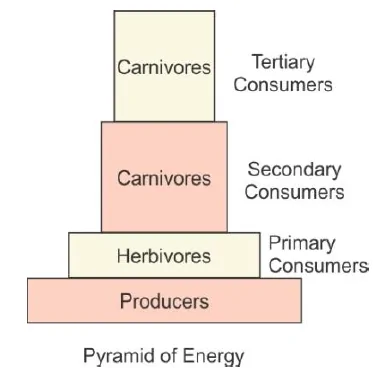It is often said that the pyramid of energy is always upright. On the other hand, the pyramid of biomass can be both upright and inverted. Explain with the help if examples and sketches.
Pyramid of energy is a graphical representation of amount of accumulated energy per unit area in different trophic levels of a food chain. An energy pyramid is always upright because there is a gradual decrease in energy at successive trophic levels. This happens according to the 10% law of energy transfer, where only 10% of the total energy is transferred from one trophic level to another. The energy is the highest at the producer level, and it gradually decreases on moving from herbivores to carnivores.

Pyramid of biomass is a graphic representation of biomass present per unit area in different tropic levels. It can be both upright and inverted. Examples: In a grassland forest ecosystem, there is a gradual decrease in biomass of organisms at successive tropic levels from producers to top carnivores which shows a straight or upright pyramid.

In a pond ecosystem, the pyramid is inverted as there is a gradual increase in biomass of organisms at successive trophic levels from producers to top carnivores. The producers are the smallest organisms, while the carnivores are larger in size.



